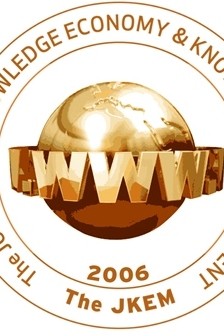EFFECT OF USING KNOWLEDGE SOURCES ON PRODUCT AND PROCESS INNOVATION IN THE CHEMISTRY INDUSTRY
xx
EFFECT OF USING KNOWLEDGE SOURCES ON PRODUCT AND PROCESS INNOVATION IN THE CHEMISTRY INDUSTRY
Knowledge Sources , Innovation Chemistry Industry,
___
- Amara N., Landry R. (2005), “Sources Of Information As Determinants Of Novelty Of Innovation In Manufacturing Firms:Evidence From The 1999 Statistics Canada Innovation Survey”, Technovation, Vol. 25, pp.245–259.
- Avermaete T., Viane J., Morgan E.J., Crawford N. (2003), “Determinants Of Innovation In Small Food Firms”, European Journal Of Innovation Management, Vol. 6, No.1, pp.8–17.
- Caloghirou Y., Hondroyiannis G., Vonortas N. S. (2003), “The Performance Of Research Partnerships”, Managerial and Decision Economics, Vol. 24, pp.85–99.
- Cassiman B., Veugelers R. (2006), “In Search Of Complementarity In Innovation Strategy: Internal R&D And External Knowledge Acquisition”, Management Science, Vol. 52, No. 1, pp.68–82.
- Cassiman B., Veugelers R., (2001), “R&D Cooperation And Spillovers: Some Emprical Evidence From Belgium”, Forthcoming American Economic Review.
- Cockburn, I., Henderson, R. (1998), “Absorptive Capacity, Coauthoring Behavior, And The Organization Of Research In Drug Discovery”, The Journal of Industrial Economics, Vol. 46, No.2, pp.157–183.
- Cohen W.M., Levinthal D.A. (1989), “Innovation And Learning: The Two Faces Of R&D”, The Economic Journal, Vol. 99, pp.569–596.
- Cowan R., David P.A., Foray D. (2000), “The Explicit Economics Of Knowledge Codification And Tacitness”, Industrial And Corporate Change, Vol. 9, No. 2, pp.211–253.
- Dasgupta, P., David, P. (1994), “Towards A New Economics Of Science”, Research Policy, Vol. 23, No.5, pp.487–521.
- Davila T., Epstein M. J., Shelton R. (2006), Making Innovation Work: How To Manage It, Measure It And Profit From It, New Jersey, Pearson Education.
- Escribano A., Fosfuri A.,Tribo J.A. (2009), “Managing External Knowledge Flows: The Moderating Role Of Absorbtive Capacity”, Research Policy, Vol. 38, pp.96–105.
- Fagerberg J., Mowery D. C., Nelson R.R. (2005), The Oxford Handbook Of Innovation, Oxford University Press Inc., New York.
- Franke, N., Schreier, M. (2002), “Entrepreneurial Opportunities With Toolkits For User Innovation And Design”, International Journal on Media Management, Vol. 4, No.4, pp.239–248. Fritsch, M., Lukas, R. (2001), “Who Cooperates On R&D”, Research Policy, Vol. 30, pp.297–312.
- Fritsch, M., Schwirten C., (1999), “Enterprise University Cooperation And The Role Of Public Research Institutions In Regional Innovation Systems”, Industry and Innovation, Vol. 6, No. 1, pp.69–83.
- Füller, J., Matzler, K., 2007. Virtual product experience and customer particiption—a chance for customer-centred, really new products. Technovation 27, 378–387.
- Hall, B.H., Link, A., Scott J.T. (2000), “Universities As Research Partners”, NBERWorking Paper No.W7643, April.
- Janz, N., Lööf, H., Peters, B. (2003), “Firm Level Innovation And Productivity—Is There A Common Story Across Countries”, ZEW working paper.
- Kaufmann A., Tödtling F. (2001), “Science-industry Interaction In The Process Of Innovation: The Importance Of Boundary-Crossing Between Systems”, Research Policy, Vol.30, pp.791-804.
- Laforet S. (2008), “Size, Strategic And Market Orientation Affects On Innovation”, Journal Of Business Research, Vol. 61, No. 7, pp.753–764.
- Lengrand, L., Chatrie, I. (1999), “Business Networks And The Knowledge- Driven Economy”, European Commission, Brussels.
- Lhuillery S., Pfister E. (2009), “R&D Cooperation And Failures In Innovation Projects: Emprical Evidence From French CIS Data”, Research Policy, Vol. 38, pp.45–57.
- Lööf, H., Broström, A. (2008), “Does Knowledge Diffusion Between University And Industry Increase Innovativeness?”, The Journal of Technology Transfer,Vol. 33, No. 1, pp.73–90.
- Medda, G., Piga, C., Siegel, D.S. (2006)., “Assessing The Returns To Collaborative Research Firm-Level Evidence From Italy”, Economics of Innovation and NewTechnology, Vol. 15 No. 1, pp.37–50.
- Miotti, L., Sachwald, F. (2003), “Co-operative R&D: Why And With Whom? An Integrated Framework Of Analysis”, Research Policy, Vol. 32, No. 8, pp.1481– 1499.
- Nieto M. N., Santamaria L. (2007), “The Importance Of Diverse Collaborative Networks For The Novelty Of Product Innovation”, Technovation, Vol. 27, pp.367–377.
- Okamuro, H. (2007), “Determinants Of Successful R&D Cooperation In Japanese Small Businesses: The Impact Of Organizational And Contractual Characteristics”, Research Policy , Vol. 36, No. 10, pp.1529–1544.
- Park, S., Ungson, G. (2001), “Interfirm Rivalry And Managerial Complexity: A Conceptual Framework Of Alliance Failure”, Organization Science, Vol. 12, No. 1, pp.37–53.
- Sternberg R., Arndt O. (2001), “The Firm Or The Region: What Determines The Innovation Behaviour Of European Firms”, Economic Geography, Vol. 77, No. 4, pp.364–382.
- Tödtling F., Lehner P., Kaufmann A. (2009), “Do Different Types Of Innovation Rely On Specific Kinds Of Knowledge Interactions?”, Technovation, Vol. 29, pp.59–71.
- Tether B. S. (2002), “Who Co-operates For Innovation And Why An Empirical Analysis”, Research Policy, Vol. 31, pp.947–967.
- Yayın Aralığı: Yılda 2 Sayı
- Başlangıç: 2006
- Yayıncı: İbrahim Güran YUMUŞAK
Abbas KHAKPOUR, Yrd. Doç. Dr.mohammad GHAHREMANI, Doç. Dr.mohammad Hassan PARDAKHTCHI
AN INNOVATION DRIVEN KNOWLEDGE MANAGEMENT FRAMEWORK FOR SME
EFFECT OF USING KNOWLEDGE SOURCES ON PRODUCT AND PROCESS INNOVATION IN THE CHEMISTRY INDUSTRY
Yrd. Doç. Dr.i.figen GÜLENÇ, Arş. Gör.özlem ARACI
MODEL OF STATE IN CIVILIZATION-DYNAMIC CONTEXT
BİLGİYİ YÖNETMEK MÜMKÜN MÜ? ELEŞTİREL YÖNETİM ÇALIŞMALARI ÇERÇEVESİNDE BİLGİ YÖNETİM
Yrd. Doç. Dr.erkan ERDEMİR, Arş. Gör.dr.umut KOÇ
YOUTH UNEMPLOYMENT PROBLEM IN ISLAMIC COUNTRIES
OVERCOMING CULTURAL OBSTACLES TO E- GOVERNMENT
BEŞERİ SERMAYE VE İNSANİ GELİŞME İÇİN ERKEN ÇOCUKLUK EĞİTİMİNİN ÖNEMİ
ON THE RELATIONSHIP BETWEEN ORGANIZATIONAL SIZE AND FORMALIZATION OF KNOWLEDGE TRANSFER PROCESSES
Martin SPRAGGON, Virginia BODOLICA
YÖNETİM UYGULAMALARININ ULUSLARARASI TRANSFERİNDE RETORİK DİZİLERİNİN DEĞİŞMESİ
